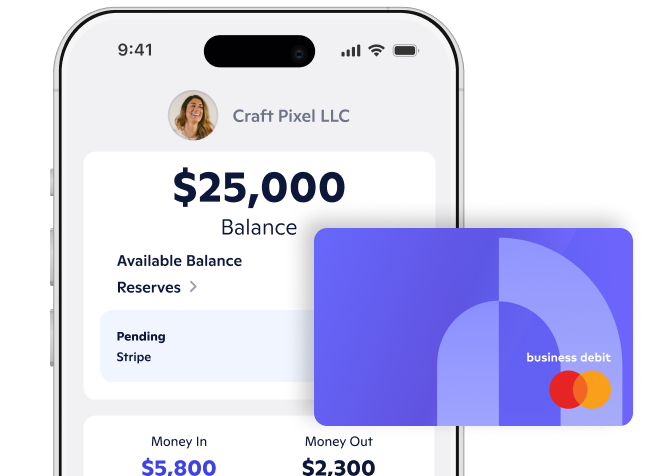
ey performance indicators, also known as KPIs, are a way of tracking your company’s success in meeting performance goals. You should choose KPIs that are directly related to your most important business objectives.
All businesses should use KPIs because they provide a clear way to measure progress. Consistently tracking KPIs allows you to make changes as soon as you notice progress stalling instead of losing months before you realize you’re not achieving what you wanted.
The built-in accountability of measuring small business KPIs can also provide motivation for you and your team to put forth your best efforts. When you know you’re going to be checking your progress regularly, you’ll do what it takes to maintain an upward trend.
Finally, KPIs provide actionable data you can use to drive your business strategy, asset allocation, and process-improvement measures. However, not all KPIs are the same. To be truly effective, you need to choose the KPIs that will have the biggest impact on your success.
How to choose the right KPIs for your business
When you’re choosing KPIs, consider the current state of your business and your future goals. Your KPIs should provide a map for how you’ll get there. Ask yourself which metrics will best measure your progress.
- Are they actionable? KPIs should be actionable—meaning they should provide a tangible way for you to measure your progress. Setting a KPI of being the best company in the world isn’t very helpful. There’s no solid, objective way to measure that. Your average order value, for example, is a specific metric that you can work to improve.
- Are they in line with your business stage? There’s no point in measuring a KPI that isn't relevant to your current business stage. For example, if you just started your business, you may want to focus on customer acquisition and growth. On the other hand, if your business is more mature, you might focus on customer retention and increasing profitability.
- Can you measure them accurately? Choose KPIs that provide measurable, reliable data. Consider how you’ll collect data and if you’ll need to account for any errors or biases.
- Do they impact your end goals? Your KPIs should be directly related to your end goals. If your goal is to increase your revenue, then a good KPI would be sales growth, instead of a peripherally-related KPI like website traffic.
- Do you have the right mix of lagging and leading indicators? Leading indicators predict your future performance. Lagging indicators measure your past performance. Both are valuable for different reasons. Measuring both will give you a comprehensive overview of your performance.
18 KPIs you should track
While every business is different, and the KPIs you choose will be based on your specific goals, the following are some business KPIs that will be beneficial for measuring progress in specific focus areas.
Sales and marketing
Sales and marketing are vital to the success of your business. Sale goals are related to the revenue your business generates, and marketing is the process of promoting your business in an effort to increase sales. The following metrics will help you track your progress in sales and marketing:
- Sales revenue: Track your sales revenue by measuring the amount of money generated by selling your products or services in a set amount of time – ideally monthly, quarterly, and yearly.
- Customer acquisition cost: The cost of acquiring new customers includes expenses related to attracting them – for example, the cost of ads. This will help you determine the ROI of your marketing promotions so you can allocate your resources to the most profitable strategies.
- Average monthly leads: A lead is a potential customer who has demonstrated some interest in your products or services. Since most businesses couldn’t survive without new customers, leads are an important leading indicator.
- Website traffic: Your website serves as the face of your business to the world. Even if you run a local, service-based business, it’s important to attract visitors to your website to generate leads and handle bookings. Track this metric by measuring how many visitors come to your website per month.
- Lead conversion rate: Your lead conversion rate represents the percentage of leads who become customers. This metric is important because it helps you evaluate your marketing strategies and investments.
- Sales growth rate: This lagging indicator measures your sales revenue over time. It helps you track the long-term sustainability of your business.
Operational/financial
Operational and financial KPIs help you keep track of how much money you're making and spending. While it’s natural to focus on how much money you make, keeping your spending in check is equally important. To better understand your finances, here are eight KPIs you should track:
- Cash flow projection: This is how much you expect to receive and spend in a set time period, such as monthly or quarterly. Maintaining an accurate cash flow projection will help you manage your business effectively.
- Net profit: This is the amount of money you earn after subtracting all of your business expenses, including labor, cost of goods, and overhead.
- Profit margins: There are three types of profit margins: net profit margin, gross profit margin, and operating profit margin. Each looks at different business activities and isolated moments, but together, they help measure your financial health.
- Quick ratio: This is a measure of your company’s liquidity—whether you have enough short-term assets to cover your debts.
- Accounts payable turnover and accounts receivable turnover: Together these metrics tell how quickly you’re paying your bills (payable) and collecting on accounts (receivable). Ideally, both will have high turnover rates, indicating you’re paying your bills quickly and you’re getting paid quickly.
- Payroll: This is the total amount of money you pay employees.
- Cost of goods sold: This metric includes all of the expenses that go into producing the goods you sell, including labor, overhead and cost of raw materials. You need to track this to understand if you’re pricing your products appropriately.
- Overtime costs: Overtime labor costs are usually 50% higher than normal labor costs. This metric can help you decide when it’s time to hire more employees.
Customer satisfaction
Keeping your customers happy is essential to running a profitable business. It’s much cheaper to keep a customer than it is to acquire one. When it comes to monitoring your customer satisfaction over time, consider using the following KPIs:
- Customer retention rate: This is the percentage of customers you retain over a set period of time. Tracking your customer retention rate will help you evaluate your customer loyalty measures.
- Customer NPS score: NPS stands for net promoter score. It indicates how likely a customer is to recommend your business to someone else.
- Customer lifetime value (CLV): This is the amount your business can expect to earn from one customer over the length of their relationship with you. It’s based on factors such as how much customers spend per purchase, how many purchases they’re expected to make, and how long they’ll remain your customer.
- Delivery rate: If your business delivers goods, the delivery rate is an important measure. It tracks the percentage of your packages that are delivered on time.
Takeaways
Don’t be overwhelmed by the number of KPIs you could measure. Start with the small business metrics that are most relevant to your success and align with your business goals. You can add more as they become relevant. No matter where you start, tracking your company KPIs will put you on the path to continuous growth and success.
Novo's business checking account includes features that can help you track KPIs related to your company's financial health. Sign up for an account today.
Novo Platform Inc. strives to provide accurate information but cannot guarantee that this content is correct, complete, or up-to-date. This page is for informational purposes only and is not financial or legal advice nor an endorsement of any third-party products or services. All products and services are presented without warranty. Novo Platform Inc. does not provide any financial or legal advice, and you should consult your own financial, legal, or tax advisors.






